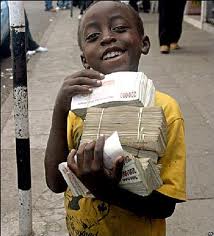Since most money now exists in the form of electronic records rather than in the form of paper, open market operations are conducted simply by electronically increasing or decreasing (crediting or debiting) the amount of base money that a bank has in its reserve account at the central bank. Thus, the process does not literally require new currency. However, this will increase the central bank's requirement to print currency when the member bank demands banknotes, in exchange for a decrease in its electronic balance.
When there is an increased demand for base money, the central bank must act if it wishes to maintain the short-term interest rate. It does this by increasing the supply of base money. The central bank goes to the open market to buy a financial asset, such as government bonds, foreign currency, gold, or seemingly nonvolatile (until the 2008 financial fallout) MBS's (Mortgage Backed Securities). To pay for these assets, bank reserves in the form of new base money (for example newly printed cash) are transferred to the seller's bank and the seller's account is credited. Thus, the total amount of base money in the economy is increased. Conversely, if the central bank sells these assets in the open market, the amount of base money held by the buyer's bank is decreased, effectively destroying base money.
The process works because the central bank has the authority to bring money in and out of existence. They are the only point in the whole system with the unlimited ability to produce money. Another organization may be able to influence the open market for a period time, but the central bank will always be able to overpower their influence with an infinite supply of money.
http://en.wikipedia.org/wiki/Open_market_operation


 :p
:p